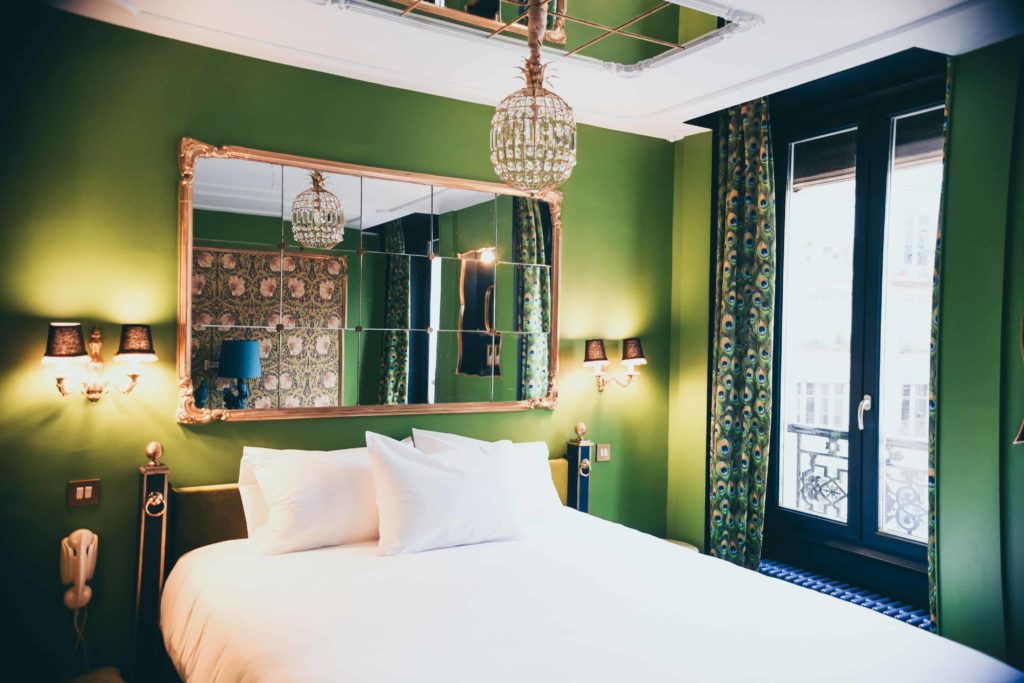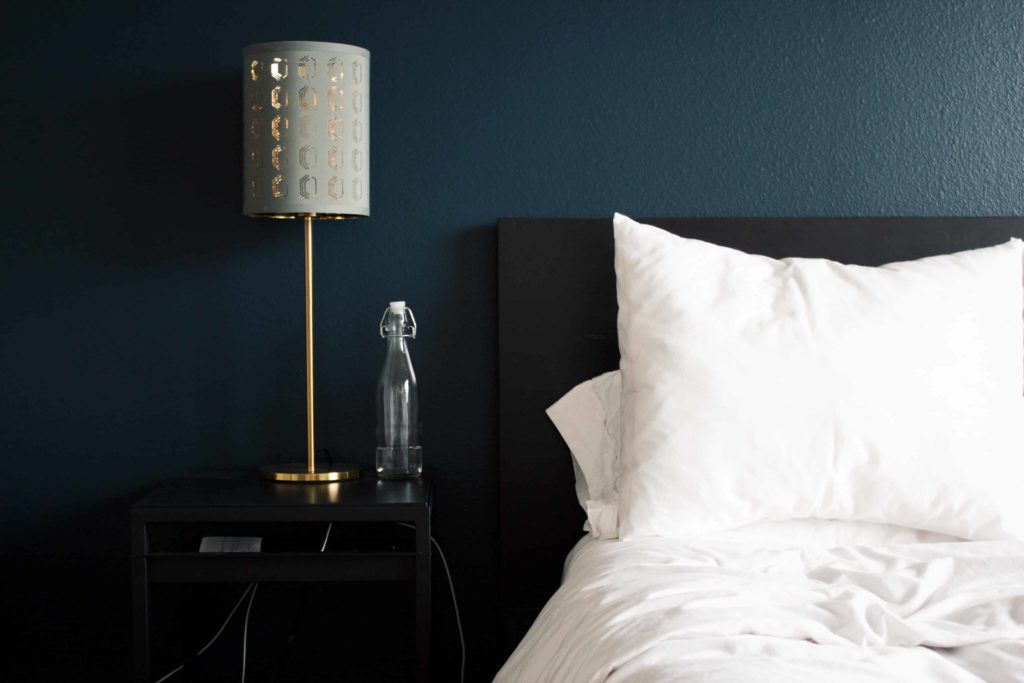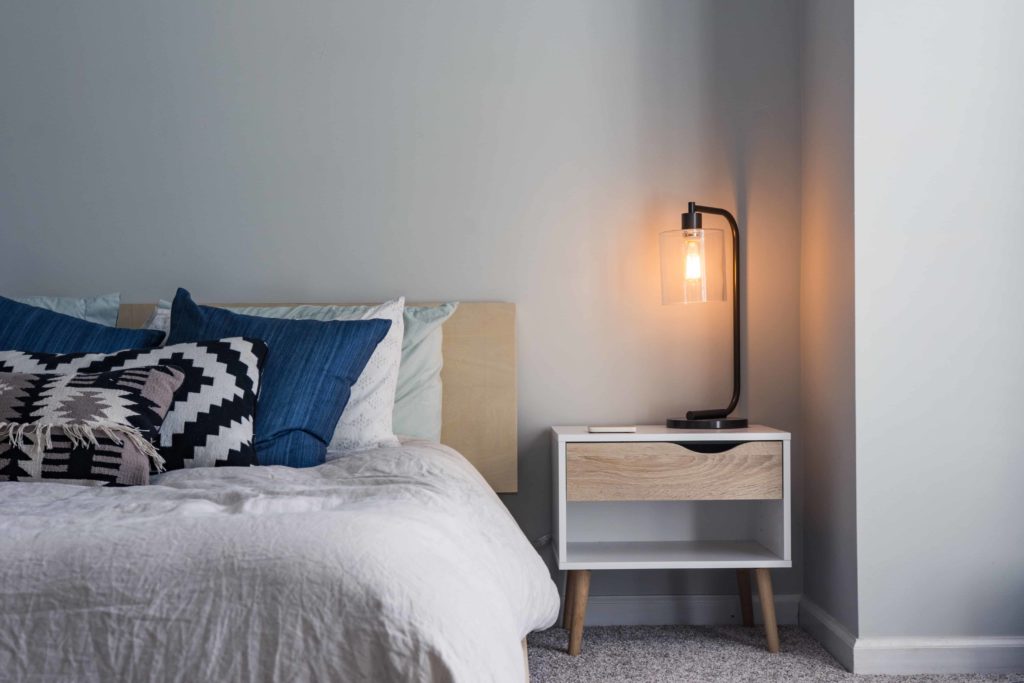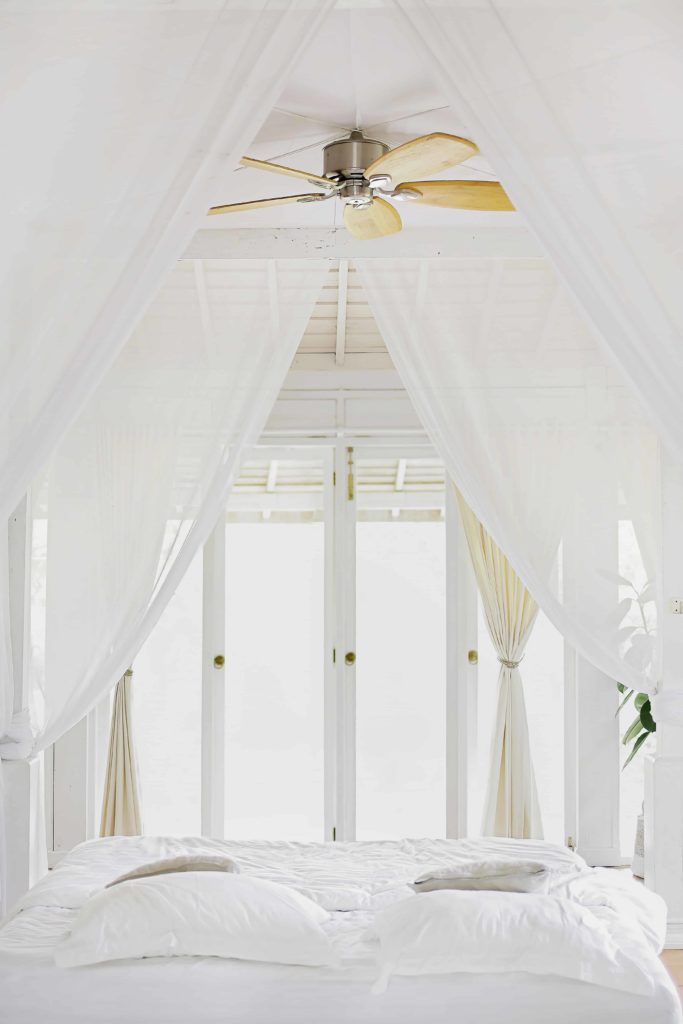Why Choosing the Right Bedroom Color is Vital for Your Sleep
When it comes to choosing the color for your bedroom, personal preferences are undoubtedly most important. It may also be that you haven’t given much thought to it. You may think that a bedroom in light green is just as good as a yellow bedroom. After all, you close your eyes when you sleep, so why should color affect you?
Recent research has shown that the color of your bedroom actually has a significant effect on your sleep. So much so that there are even the best and worst bedroom colors to sleep in. And since this is not common knowledge even among people who know one or two things about sleeping, let’s take a closer look.
Psychology and colors – Why are colors important?
Perception experts have shown that colors deeply affect our emotions. The reason is evolutionary. Human beings always have linked specific colors to specific emotions. This has also led us to assign values and meanings to colors.
 Have you ever wondered why red means you have to stop, and green means you have to leave? Surely we could have chosen a different color pair to represent these simple instructions. But we didn’t because green and red have each a specific meaning assigned to it we all commonly share. While green is often associated with nature and energy, evolving life and freshness, red is associated with blood, danger, and aggressiveness. So there is a good reason why we use green for go and red for stop.
Have you ever wondered why red means you have to stop, and green means you have to leave? Surely we could have chosen a different color pair to represent these simple instructions. But we didn’t because green and red have each a specific meaning assigned to it we all commonly share. While green is often associated with nature and energy, evolving life and freshness, red is associated with blood, danger, and aggressiveness. So there is a good reason why we use green for go and red for stop.
Therefore, the color of your clothes or the color of your car will affect both you and the people around you in a certain way. Consequently, it does make sense to carefully choose the colors that surround you, also in your bedroom.
Which are the best and which are the worst colors for sleep?
So, with all this in mind, which are the best and which are the worst bedroom colors for sleep? Well, there are several. As with everything else, there is not a single best color for sleep.
 However, you want to feel calm, relaxed, and safe when you go to bed and close your eyes. And, one of the best visual representations of calmness and safety are vast forests, open skies, and large rivers.
However, you want to feel calm, relaxed, and safe when you go to bed and close your eyes. And, one of the best visual representations of calmness and safety are vast forests, open skies, and large rivers.
Therefore, the best colors for sleep are usually on the deep, cold spectrum. These are generally dark blue or intense green with brown tones. We traditionally associate such colors with nature, calmness, food, shelter, and safety, all of which are beneficial for a good night’s sleep.
In addition, you want to use a single shade. Several shades will make your mind more alert. In a nutshell, if you want to have an easy time falling asleep, make sure you choose a dark, soothing color without any changing patterns or shades.
Why is blue the best bedroom color for sleep?
Just close your eyes for a moment and think of the ocean. Isn’t it grounding, calming, and relaxing – something nature has given us? Blue is a soothing color that promotes calmness and sleep. What’s more, your brain is particularly susceptible to the color blue, thanks to particular receptors in your retina called ganglion cells. These are more sensitive to blue than any other color and send a message to your brain that you are in a quiet and safe environment. As a result, your heart rate and blood pressure decrease, leaving you with the best conditions to fall and stay asleep.
 And here are even some statistics to it: According to a Travelodge survey among 2,000 British people, those who sleep in a blue bedroom enjoy an average of 7 hours and 52 minutes of sleep per night. That’s far more than most Americans, considering that a third of American adults regularly get less than 7 hours of sleep. Some blue color in their bedroom could be a simple step to fewer sleepless nights.
And here are even some statistics to it: According to a Travelodge survey among 2,000 British people, those who sleep in a blue bedroom enjoy an average of 7 hours and 52 minutes of sleep per night. That’s far more than most Americans, considering that a third of American adults regularly get less than 7 hours of sleep. Some blue color in their bedroom could be a simple step to fewer sleepless nights.
Another advantage of a blue bedroom is that in the survey, 58% of blue bedroom sleepers also reported that they wake up feeling happy and refreshed.
What can you do if you don’t like rich, deep colors in your bedroom?
Choose some lighter, muted shades. In the case of blue, for example, look for a pale blue that reflects the color of the sky on a clear day, and you will get the same sleep-promoting soothing feelings. Another benefit of a more neutral shade is that it typically goes well with different kinds of furnishings you currently own.
Here are some other shades which achieve a cozy, calm ambiance in your bedroom.
 Soft green – The great thing about green is that it naturally contains both warm and cooling elements. If you choose a pale green shade, you’re bringing in more warmth into your bedroom, helping you to feel safe and satisfied.
Soft green – The great thing about green is that it naturally contains both warm and cooling elements. If you choose a pale green shade, you’re bringing in more warmth into your bedroom, helping you to feel safe and satisfied.- Lavender – A deeper purple might be too stimulating (see below), but the lighter shade lavender is an excellent color for your bedroom. It doesn’t overburden the room and has a stress-reducing effect.
- Soft grey – Just a touch of grey on the walls of your bedroom can create a very
soothing presence. Keep it soft and subtle, so it doesn’t get too dramatic or depressing (see below).
What are the worst colors for sleep?
The worst colors you can choose for your bedroom are aggressive colors that attract attention. Colors like bright orange, yellow, and red are all dynamic and create a sense of vigilance, especially when combined with black. It is easy to see that many poisonous animals have bright color patterns or shades of aggressive colors and black intertwined.
 If you paint your bedroom in orange and black, you are basically surrounding yourself with poisonous animals. And, as you may suspect, this is not beneficial to sleep.
If you paint your bedroom in orange and black, you are basically surrounding yourself with poisonous animals. And, as you may suspect, this is not beneficial to sleep.
Here are some other colors which you should stay away from in your bedroom:
- Purple is a mentally stimulating color that boosts your creativity and can contribute to more vivid nightmares.
- Dark Grey is gloomy and can be depressing.
- Brown, like grey, brown is dark and anything but cozy, creating a sense of restlessness rather than calm.
What else should you keep in mind when painting your bedroom?

Again, if you don’t like heavy dark colors choose, use the lighter, pastel or muted shades of these colors like soft blue and green with a hint of yellow warmth. Neutral, earthy, or skin-related tones also have a calming effect and promote the positive flow of energy, according to Feng Shui.
Any color that is too bright will stimulate you and create a feeling of alertness rather than relaxation.
Use a flat color instead of an eggshell or a glossy finish. Shiny surfaces reflect the light, while flatter paints absorb more color and feel softer.
When choosing the color, you also need to consider the size of your bedroom and what’s on the floor, as well as the lighting (lighting is so important!).
Also, make sure that the colors you choose for your bedroom accents complement each other. High-contrast colors stimulate your eyes and mind.
Conclusion
As with everything else, there is not always a clear solution when it comes to improving your sleep. To make your bedroom quiet and relaxed, you need to consider several factors. You want to think carefully about the furniture inside, the temperature, the air quality, and any noises that might disturb you.
You may need to try different things and see what works for you. However, choosing the right color for your bedroom is one essential element not to be missed.
I never thought about the color of my bedroom walls.
But what you say makes good sense.
When I repaint, I will go for blue diluted with
about 3/4 white paint.
And will be sure to use matte finish , not semi=gloss.
Thanks for the tips. I enjoy your blog!
PeterTardash.com